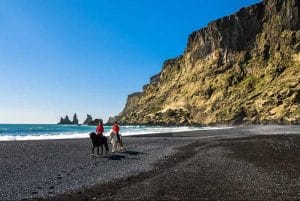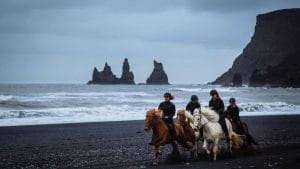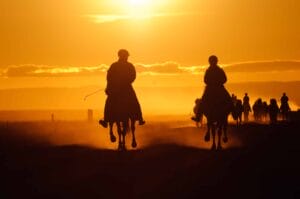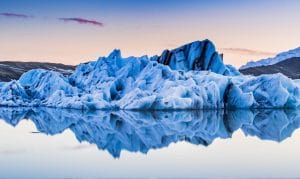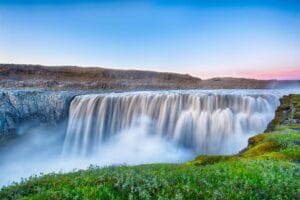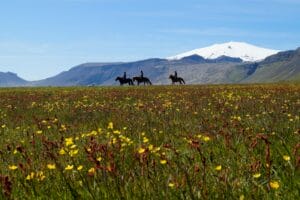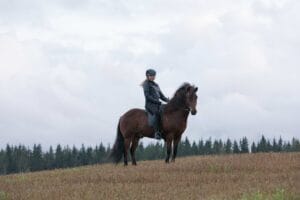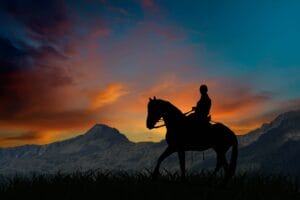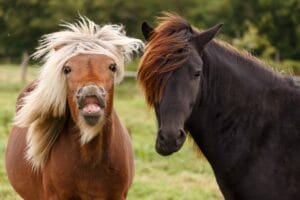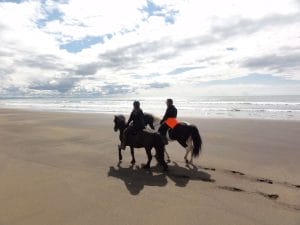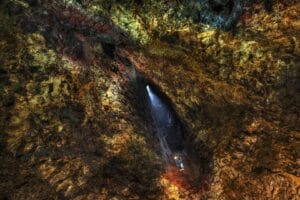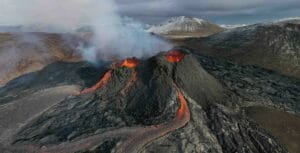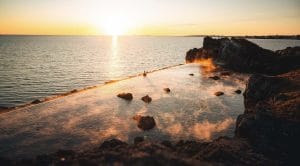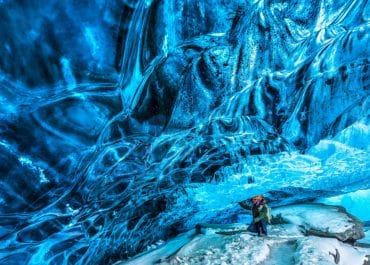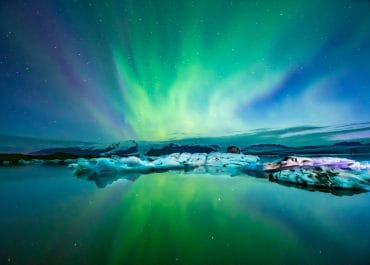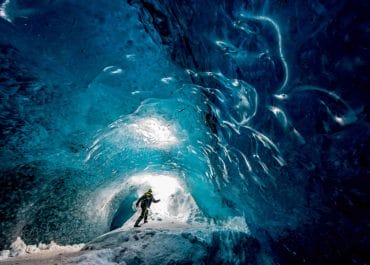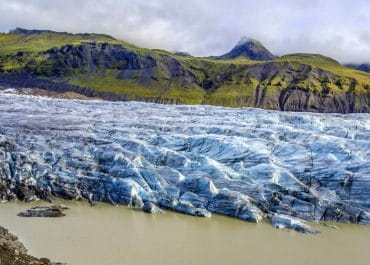Majestic creatures, Icelandic horses are way different than any other animal you may have come across. With a never-ending loyalty towards the people of Iceland, Icelandic horses came along when the first settlers arrived at the island and have been around since then. The extremely lovable creatures, Icelandic horses are very curious, intelligent, and more independent as compared to other breeds of the horse. Iceland has various cultural rites and traditions dedicated to them which suit every bit the purpose considering their place in the history of human civilization on the Island. Here you will find everything that you will need to know about Icelandic horses before you plan your horse-riding trip when you visit Iceland.

How to Interact with Icelandic Horses
There are always a few things that one should take care of while dealing with any and every animal out there. All animals are sensitive and can act out if you approach them carelessly or rashly without taking a few precautions. Icelandic horses are very friendly creatures but there are still some boundaries you should follow. Here is a list of things for you to take care of:
- Avoiding petting the horse. First of all, they may kick or even bite you, second it may make the horses learn some of the unpleasant or obnoxious behavior which can hinder the ride of riders that come after you for a trip.
- Do not feed the horse any treats. Icelandic horses are trained in a certain way and are kept on a very strict diet. Any additional treats can hamper the routine and plausibly, their health too.
- Do not ride a horse without the permission of the owner. This will put you and the horse both in danger.
- Choose a parking site that is off the main road. It can be very troublesome for the residents to commute. While you are at it make sure that the parking spot is not in a poor visibility zone, icy spot, or on private property.
- Do not trespass private property just so that you can ride a horse. Almost all owners keep their horses on private property so make sure to book and confirm before you continue with the ride.

Icelandic Horses – A Brief Study of History
Norse settlers arrived in Iceland somewhere around the mid-9th or early 10th century aboard the Vikings’ ship and with them came the Icelandic horse. The Icelandic horses’ habitation on the island is as old as humans. The reason why this specific breed of horses was chosen for the voyage is still unclear but it is believed that it was because of the stature of these animals. While it is easier to transport larger animals via sea vessels since they are sure-footed in comparison to the smaller animals, they take up a lot of space. This special breed of horses was smaller in size, had a sure footing, and took less space on the vessel – the ideal animal to take along on the voyage.
A law was passed in 982 AD which prohibited the citizens to import any other breeds of horses into the island. This has kept Icelandic horses secluded for a long time resulting in over 1000 years of pure breeding.
The long time that Icelandic horses have spent on the land of ice and fire has made them evolve exceptionally to the environment as well. Although these horses were already sure-footed, now they can easily cross the toughest of terrains, climb uphill like it’s a breeze, and ride smoothly along with the air. By the time, they have also started to grow thick fur coat in winters and shed the same in summers. With a fine life expectancy, an Icelandic horse lives up to 40 years on average while the life expectancy of all other breeds is about 25-30 years only. The oldest horse ever to be seen lived for a good 59 years.

Mythology and Folklore
When Norse settlers brought this breed of the horse along with them, they also brought a hefty list of the mythos. There are so many myths from olden times concerning the Icelandic horses which mainly show them as the most prized possession for an Icelander. It is said that in the early civilization of Norse settlers, stealing somebody’s horse was punishable by banishment and would also result in thieves to be outlawed. Outlaws could be killed on site so it was pretty clear – you steal someone’s horse, you die.
Like in Egyptian mythology, Icelanders are also said to have buried their most valuable possession with them at the time of death which they can use in the afterlife. The higher you rank in society, the more valuable thing you can take with you. It’s no surprise that only kings and other powerful members of the court could be buried with their horses – that is the amount of importance an Icelandic steed possess.
The majestic horse Sleipnir of the pagan god Odin is believed to be created as a result of an attempt to stop the king of horses Svaðilfari who was helping a giant in building a wall in Asgard on a wager against the god. The god of mischief – Loki shape-shifted into a mare and seduced the king of horses so that the wall is never finished so that they do not lose the bet. Later Loki gave birth to Sleipnir as a result of this encounter.
Sleipnir is credited with the creation of Ásbyrgi canyon in the north of the island. It is said that the canon with the shape of a horse was created as Sleipnir’s foot touched the ground when Odin stepped on earth from heaven.
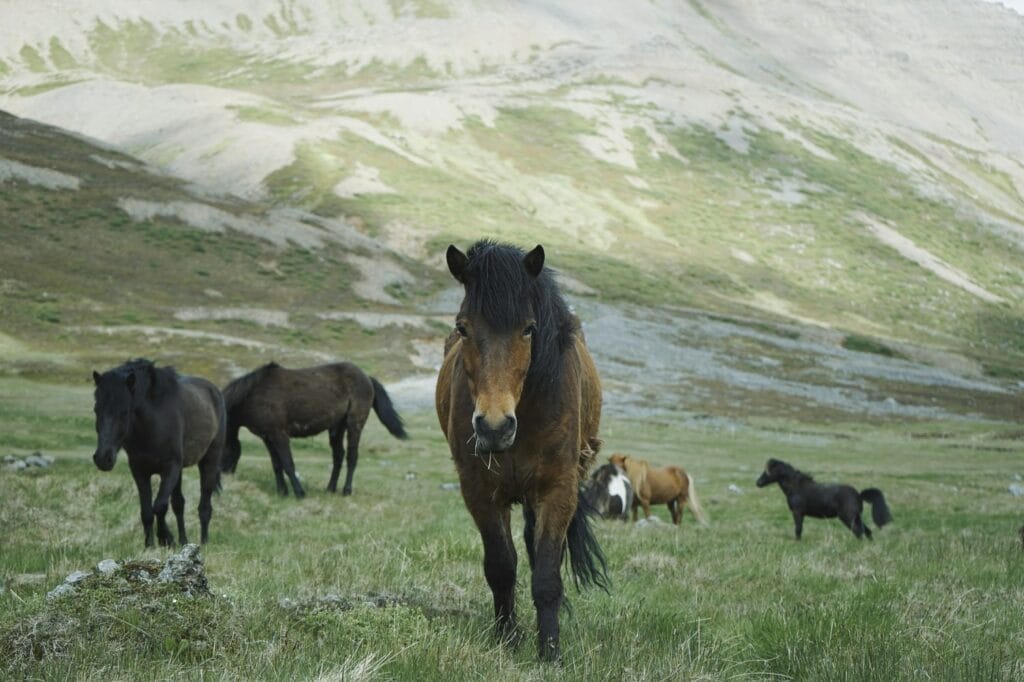
Gaits – The Way Icelandic Horse Moves
Gait can be understood as the kind of walks a horse has. Icelandic horses are divided into two categories: the four-gait horses (fjórgangs) and the five-gait horses (fimmgangs). Five-gait horses are found to be more flexible in their movement and are smoother with their other gaits as well. Icelandic horses are popular in the world for their sure-footedness and ability to walk/cross extremely difficult terrain. Gaits can be of two different kinds, natural and artificial. Icelandic horses are one of the purest breeds in the world and hence are unique since all horses have 3 natural gaits but Icelandic horses are born with at least 4 natural gaits and some even 5. Following are the 5 natural gaits of an Icelandic horse:
Fet – Walk
The walking pace is considered to be the most graceful of all. You can spot this gait in most of the horse shows. It is believed that the more relaxed a horse is with this gait, the higher grade they will get when competing. It is a slow gait, a four-beat, symmetrical gait. Either one or two legs of the horse touch the ground. Other gaits have horse glide in the air for a longer period while the feet are more in touch with the ground hence more composure and control are required. This gait is a good choice to start and end your ride.
Brokk – Trot
Think of the times when you go brisk walk, that is exactly what Trot is like. Horses walk with their legs moving diagonally to each other in pairs. The most preferred walk for the times when horses are being trained. The tort is rather bouncier as compared to Fet as well as Tolt. While it may feel a tad bit uncomfortable for you to ride the horse when it uses this gait but it is important that it is used since Trot is the gait horses use to cross difficult terrains, while going uphill and to rest in between rides. Trot may seem like a bumpy ride but if you have ever ridden a horse or know a little about the subject you must be aware of the fact that this is the most common walk for horses all the world.
You may bounce with each step that the horse takes so if you are not familiar with the riding, you may find it comfortable. A good way to get along with Trot of your horse is by moving along with it with each step.
Tölt – Tolt: The Unique Gait of Icelandic Horse
Tolt is unique to Icelandic horses and one of the things that make them different from any other breed around the world. It is a natural gait and every horse has it since birth. Tolt itself is a very smooth gait but five-gait horses can ride this gait in an even smoother manner. Tolt is a four-beat lateral ambling gait. The speed can vary on huge levels. You will not feel even a single bump even when your horse picks up the pace while riding Tolt. The smoothness of Tolt is often shown off by Icelanders by holding a glass full of water till the brim as they ride the horse without spilling it. A horse riding Tolt looks so effortless as if it is gliding in the air. You can see foals developing Tolt only within a year after they are born. An Icelandic horse can ride at a speed of 32kmh when riding Tolt. Tolt is so stable that most riders can ride it without even using a saddle. How convenient is that, huh?
Stökk – Canter/Galop
A three-beat natural gait, horses in Iceland can ride galop both fast and slow. Canter and Galop are considered to be the same in Iceland. Galop is also a natural gait as Tolt. Instead of moving forward, horses glide slightly diagonally towards the front i.e. canter. Galloping is a tiring gait for a horse even though they are gliding in the air as all four hooves lift from the ground and land in odd sequence, the whole weight of the body of the horse is handled by two legs touching the ground.
Skeið – Flying Pace
A ride that goes at a pace of up to 48 kmh, the flying pace is a high-speed gait in which both legs from one side touch the ground at the same and lift at the same time. Ideal to use when covering short distances, flying pace is usually used in competitions and races. The crown jewel of horsemanship, being able to ride at flying pace is the highest level of expertness in the riding world. Flying pace is a two-beat gait, and hence there are intervals during the ride when all four legs of the horse are in the air at the same time.

Physical Appearance
Icelandic horses are very popular for their unique gaits but they are also known for their unique physique and appearance. The Icelandic horse is sized conveniently with a smaller yet very strong body and built, and beautiful appearance. The head of the horse is quite big and thick, the forehead is wide and big, the legs are shorter as compared to other breeds, and straight profile.
There are over 40 different colors and 100 different patterns you will find in Icelandic horses. There are special words and phrases designated to each color and pattern in Icelandic. The most common color you will see on an Icelandic horse is either brown or red/chestnut.
The rarest color to be found on an Icelandic horse is litföróttur which translates to “color travels”. This simply means that horses with this color scheme change the color of their coat several times in their lifetimes. The surprising part is that these horses can have a different colored coat on different parts of their bodies. You may be able to find a horse with a pearl white coat over its back and brown colored coat on its head.
If that wasn’t an interesting enough fact about the breed, some Icelandic horses have blue eyes or mixed color eyes with a hint of blue in them. Icelandic call such horses “glass-eyed”. Dual-colored horses are the ones which usually get the blue eyes or it happens when colored covering covers the eye of the horse.

Some Interesting Facts About Icelandic Horses
- There is a special committee assigned with the task of naming the horses in Iceland. All the horses are allowed to be given names from a certain set only. Most names refer to certain qualities of the horse like the color of their mane, temperament, hobbies, etc.
- The history of Icelandic horses being pure-bred is over 1000 years old.
- Once an Icelandic horse leaves the island, it is never allowed to return to the country for the sole purpose of keeping the breed exclusive to the island and completely pure. This is the reason that people never take their best horses when they go out to compete in races and other challenges.
- All the attempts of cross-breeding Icelandic horses with other breeds over the world has resulted in an infertile offspring.
- The horse of the Pagan god Óðinn from the mythology had 8 legs instead of 4.
- A special day dedicated to Icelandic horses known as International Day of the Icelandic Horse. People associated with horse communities from around the world get together in the honor of the Icelandic horse and enjoy an open day at their stables for visitors. It is celebrated on May 1st. Icelanders organize special events like demonstrative riding in celebration of the day along with celebrations in the clubs and restaurants around the world organizing events and competitions.
- Icelandic horses are also exceptional swimmers
- An extensively heavy fur is grown on the body of an Icelandic horse in winters and they shed every hair in summers – taking on a completely different look.
- There are about 80,000 horses in Iceland whereas the human population in the country stands at only 364,260.


